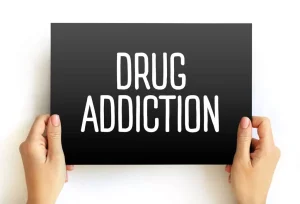
However, it’s important to note that even those excluded based on quality produced similar results when included as part of sensitivity analyses. When considering the effect estimates extracted from Magill et al. (2019), confidence intervals were wide in some cases. Similar limitations occurred in a Swiss study of an 8-module internet-based program encompassing CBT and MI called Snow Control for individuals reporting cocaine use at least 3 times in the past 30 days (Schaub, Sullivan, Haug, & Stark, 2012). Participants were randomly assigned to the Snow Control program or an 8-session online psychoeducation control. Treatment engagement was very low, with only 18/96 (19%) allocated to the Snow Control program accessing a module and only 8 of the 100 allocated to control.

Quality of the Evidence

The studies reviewed above highlight both the promise of technology-based interventions as well as their significant limitations, which include highly variable rates of retention and adherence and poor rates of follow-up, particularly for studies collected entirely on-line (Kiluk et al., 2010). Several studies have used use wait-list controls, hence limiting the inferences that can be drawn regarding the Alcohol Use Disorder efficacy of the intervention evaluated. Issues of privacy and confidentiality are particularly important to consider when dealing with individuals who are users of illicit drugs, particularly in the era of electronic medical records (Ramsey et al., 2016). Finally, while validated technology based interventions are generally less expensive than traditional clinician-delivered interventions, the lack of a reimbursement structure for these interventions constrains their availability to date.
- Furthermore, specific effects are deemed inseparable from “relational” effects (e.g., therapeutic alliance) when treatments are delivered in the context of an interpersonal relationship (Miller & Moyers, 2014), thereby making it difficult to identify CBT’s precise mechanisms.
- The primary benefit of cognitive behavior therapy is its ability to help people gain insight into themselves by recognizing patterns in their thinking and behavior that may be contributing negatively to their overall well-being.
- Challenges like poverty, unemployment, and housing insecurity often drive individuals toward substance use as an escape, perpetuating cycles of despair.
The Impact of Addiction on Career and Financial Stability
- This psychotherapy, or talk therapy, began in the 1960s and has remained a popular therapy method.
- Trimmed estimates with influential studies removed (Baujat, Mahé, Pignon, & Hill, 2002) were also provided.3 Finally, to test for potential publication bias, the relationship between error and effect size was assessed using rank correlation (Begg & Mazumdar, 1994) and graphical methods (Egger, Smith, Schneider, & Minder, 1997).
- When an addicted person understands why they feel or act a certain way — and how those feelings and actions lead to substance use — they are better equipped to overcome their addiction.
- Cognitive behavioral therapy (CBT) for substance use disorders has shown efficacy as a monotherapy and as part of combination treatment strategies.
- There can be a wide range of thoughts like these, but all of them point to a smattering of automatic thoughts that may come up when faced with stressors, triggers, or cravings to use.
One of the distinguishing features of CBT has been its relative durability of effects, with significant treatment effects persisting through a follow-up period, in some cases with individuals showing greater improvement after treatment ends (i.e., ‘sleeper effect’) (e.g., Carroll et al., 2000; Carroll et al., 1994b; Rawson et al., 2002). As such, the cognitive behavioral therapist needs to consider how abstinence is to be rewarded as part of treatment. In addition to consideration of traditional CM rewards—monetary prizes, vouchers for goods, or treatment “privileges” (e.g., take-home doses of methadone)—the arrangement of social contingencies, such as is cbt for substance use disorders evident in BCT approaches, should be considered. The question to be addressed in treatment is how contingencies can be arranged to encourage initial experiences of abstinence and entry into non-drug activities.
How Does Cognitive Behavioral Therapy Work?

Each approach offers unique benefits, but all focus on helping individuals identify negative thought patterns so they can replace them with healthier ones while learning how best to respond effectively when faced with temptation or relapse triggers related to addiction recovery efforts. Results of the present evaluation suggest that CBT for SUD has strong research support per the Tolin Criteria. Notably, this evaluation builds upon the prior Society of Clinical Psychology evaluation of Motivational Enhancement Therapy plus CBT, which used the Chambless and Hollon (1998) criteria, by indicating that CBT alone is an effective intervention for SUDs, even when using more rigorous and updated criteria.
Resources for the LGBTQ+ Community
Empirical evidence indicates that cognitive therapy has the potential to be an efficacious treatment for alcohol and other substance use disorders, especially with adult patients who present with comorbid mood disorders, and with adolescents. However, improvements in the treatment approach still can be made, most notably via alliance-enhancement strategies that may improve retention in treatment, and more routine incorporation of the “stages of change” model. Several studies have developed web-based interventions for individuals with stimulant use disorders (amphetamines or cocaine). In a study conducted fully online in Australia, 160 individuals with self-reported amphetamine use problems were randomly assigned to a three-session computerized intervention based on MI with some components of CBT or a wait list control (Tait et al., 2014). Uptake of the computerized intervention was weak, with only 63% of those assigned to this condition accessing a module, and rates of 3-month follow-up were modest across conditions (57% of those in waitlist control and 48% of those assigned to computerized intervention). As standard outcomes (urinalyses or self-reported days of amphetamine use) were not reported, it was difficult to draw conclusions regarding the efficacy of the intervention in this sample.
Leave a Reply